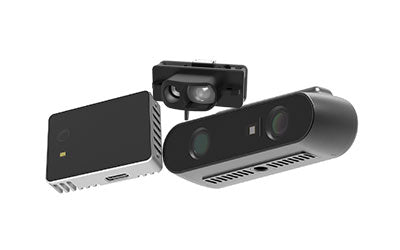Los beneficios de utilizar sensores TOF en la interacción humano-robot

La interacción humano-robot (HRI, por sus siglas en inglés) se ha convertido en un campo cada vez más importante en los últimos años, ya que se están desarrollando robots para realizar tareas en diversas industrias, incluyendo la manufactura, la atención médica y la educación. El éxito de la interacción humano-robot depende de la capacidad de los robots para percibir y comprender el comportamiento humano, y aquí es donde entran en juego los sensores de tiempo de vuelo (TOF).
Los sensores TOF son un tipo de tecnología de medición de distancia que utiliza el tiempo que tarda una señal de luz en viajar desde el sensor hasta un objeto y regresar para calcular la distancia. Esta tecnología tiene muchos beneficios en el contexto de la interacción humano-robot.
En primer lugar, los sensores TOF pueden mejorar la seguridad en la interacción entre humanos y robots. Al medir con precisión la distancia entre el robot y las personas, los sensores TOF garantizan que el robot mantenga una distancia segura de las personas y evite colisiones. Esto es especialmente importante en industrias como la manufactura, donde los robots trabajan junto a los humanos en espacios cercanos.
En segundo lugar, los sensores TOF pueden mejorar la precisión de los movimientos del robot. Al proporcionar mediciones de distancia precisas, los sensores TOF permiten que los robots se muevan con mayor exactitud y tomen mejores decisiones en tiempo real. Esto es crucial para tareas como las operaciones de recogida y colocación en la manufactura, donde los robots necesitan recoger y mover objetos con precisión.
En tercer lugar, los sensores TOF pueden ayudar a los robots a reconocer y comprender el comportamiento humano. Por ejemplo, los sensores TOF pueden detectar cuando una persona se acerca al robot y ajustar su comportamiento en consecuencia. Esto puede hacer que los robots sean más receptivos e intuitivos, facilitando su interacción con los humanos.
Por último, los sensores TOF permiten que los robots operen en entornos con poca luz. A diferencia de los sensores tradicionales, que dependen de la luz ambiental para funcionar, los sensores TOF emiten su propia luz, lo que los hace útiles en entornos oscuros o con poca iluminación. Esto es particularmente importante en industrias como la atención médica, donde los robots se desarrollan para realizar tareas en hospitales donde la iluminación puede ser baja.
En conclusión, los sensores TOF ofrecen muchos beneficios en el contexto de la interacción humano-robot. Al mejorar la seguridad, la precisión, la capacidad de respuesta y el rendimiento, estos sensores están ayudando a que los robots sean más efectivos e intuitivos, permitiéndoles realizar una amplia gama de tareas en diversas industrias. A medida que el campo de la interacción humano-robot continúa creciendo, es probable que los sensores TOF desempeñen un papel cada vez más importante en el desarrollo de robots que puedan trabajar de manera eficiente junto a los humanos.
Synexens 3D RGBD ToF Depth Sensor_CS30

-
Publicado en
CS30


